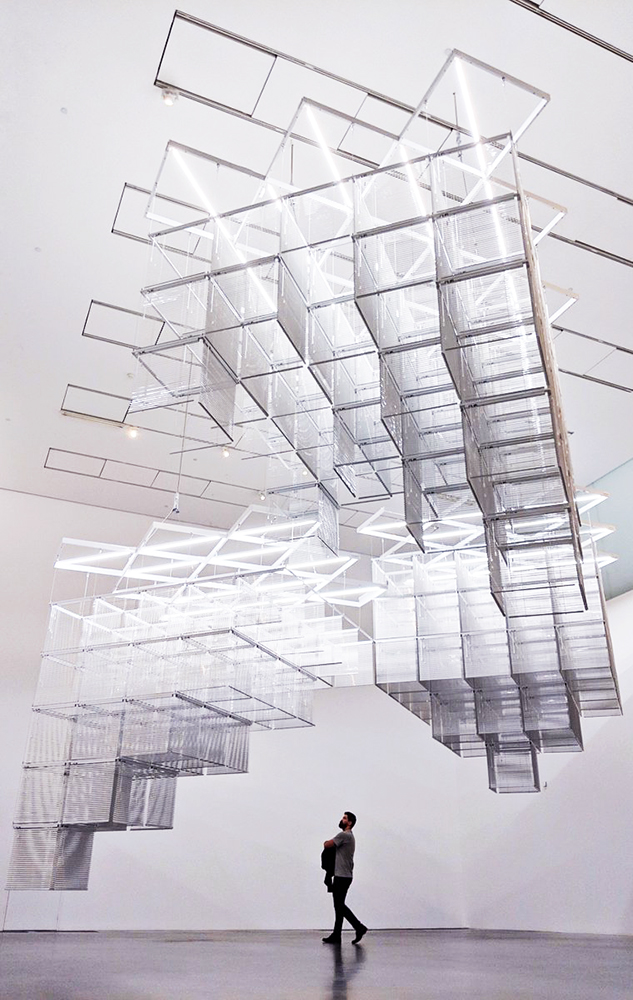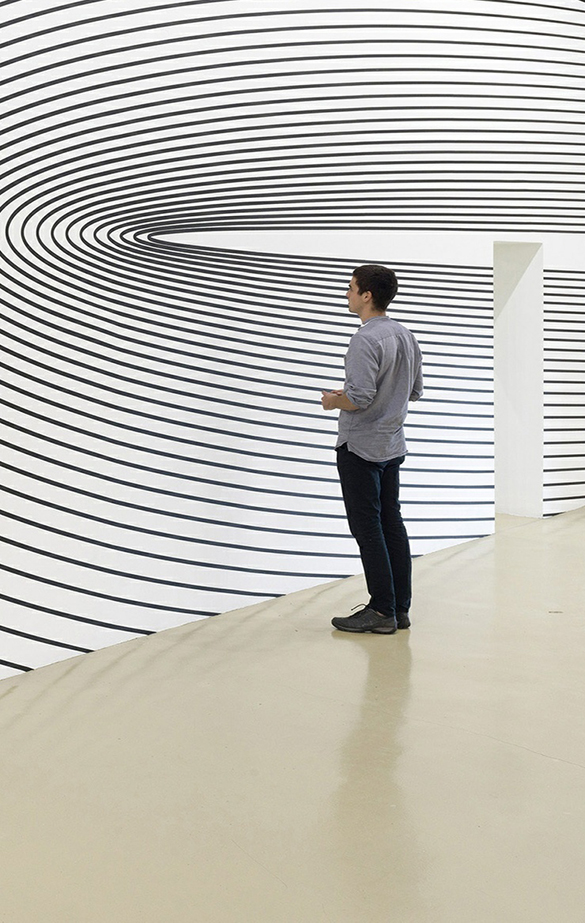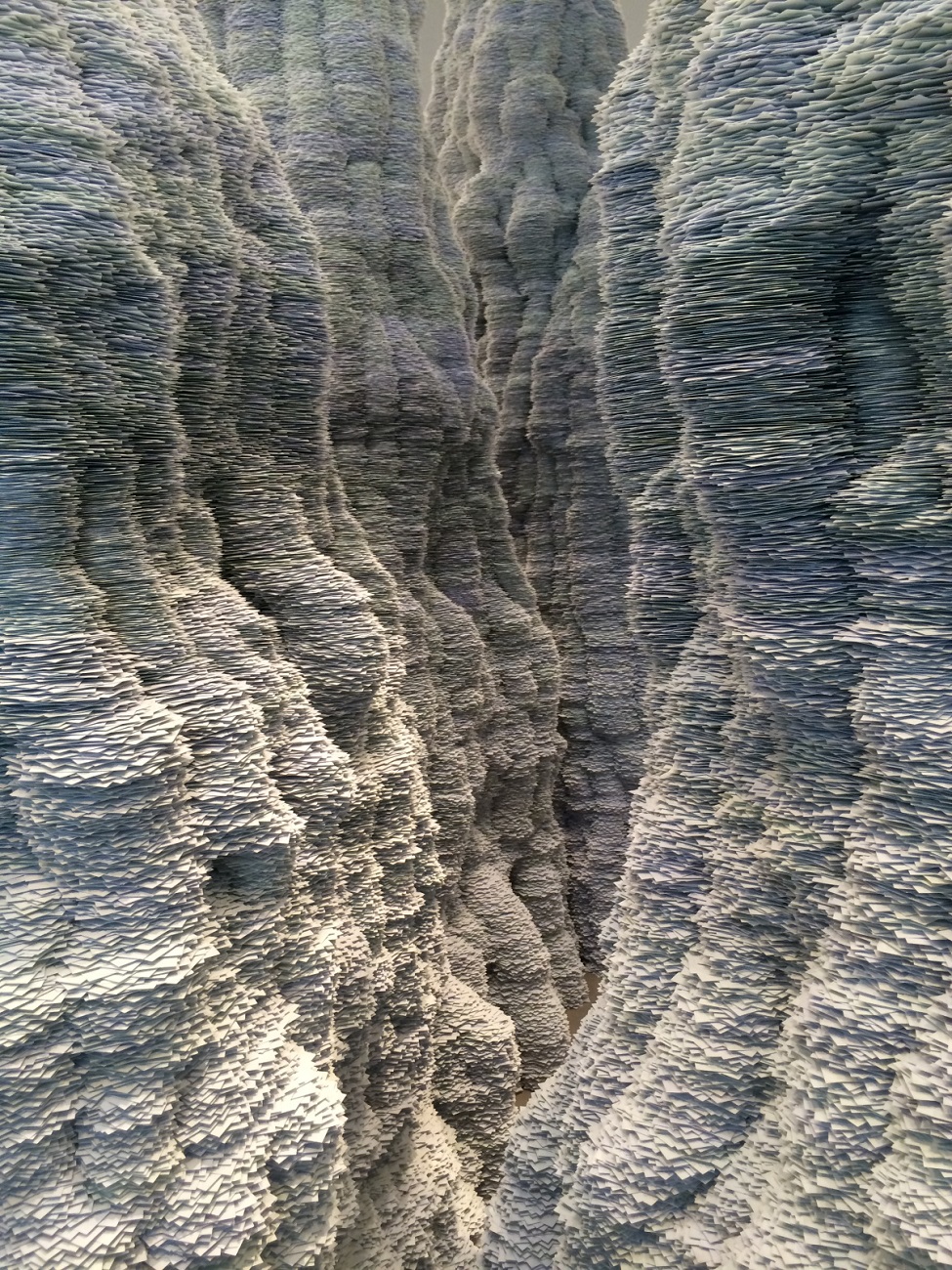


Haegue Yang
Sol LeWitt Upside Down
Haegue Yang’s expansive installation, titled Sol LeWitt Upside Down – Structure with Three Towers, Expanded 23 Times, Split in Three, consists of over 500 independent components made of Venetian blinds that together recreate one of LeWitt’s signature works from 1986 – connecting LeWitt’s work to her own attempts to be liberated from the urge to compose, and the way modular thinking leads towards proliferation. Magnifying its size 23 times and hanging it upside down, this is the first work in her Sol LeWitt Upside Down series.

JOHN MCCRACKEN
ДЖОН МАК-КРАКЕН
约翰·麦克拉肯
ジョン·マクラッケン
STAR, INFINITE, DIMENSION, AND ELECTRON
John McCracken’s work embodies a threshold of physical matter and infinite mind/space. In his own words, this ‘character,’ of his work has been indefinable and difficult to write about as an integral whole. Typically referred to as one of the leading West Coast counterparts to the Minimalist regime of Donald Judd, Carl Andre, Robert Morris, Dan Flavin, Sol Lewitt and Robert Bladen, McCracken’s work extends the architecture of Minimalism, complicates the surface of simulated or real machine production, and reflects a mysticism of transcendence.

CLAUDIA COMTE
HOW TO GROW AND STILL STAY THE SAME SHAPE
If Comte’s sculptures are rooted in the naturalness of biomorphic forms, her mural interventions transform surfaces into optical sequences and infinite graphic signs with a digital age aesthetic. The monochromatic vocabulary that invests all her work brings her visually close to the abstraction of Sol LeWitt, Bridget Riley and even John Armleder, an artist with whom she studied. On the occasion of her exhibition at Castello di Rivoli, Comte has carried out a gigantic mural intervention consisting of eleven individual wall paintings specially designed for the galleries on the third floor of the historic residence. Also inspired by some eighteenth-century decorative motifs present on the ceilings and walls of the main museum building, the work develops repeated modules through space.

TARA DONOVAN
En el proceso, transforma los productos comcerciales en espectaculares formas orgánicas que desmienten su composición material.
Inspirada en el sistema que utilizaban artistas en la década de 1960 como Donald Judd, Sol LeWitt y Chuck Close, Donovan se adhiere a un proceso de reutilización de un material fabricado ó producto final, con una solución única para el conjunto, ya sea apilado, encolado, pegado o plegado.

Bernar Venet
88.5° Arc x 8
Bernar Venet is a French Conceptual artist known for his curved, mathematically precise metal sculptures, and for his material exploration of coal, asphalt, and tar. “My work is self-generated. Nothing around me serves as a particular inspiration,” Venet said of his art. “I work, and I make discoveries while remaining open-minded to anything that might present a new possibility in the context of my work; this framework looks to enlarge its scope as a result of new formal and conceptual discoveries.” Born on April 20, 1941 in Château-Arnoux-Saint-Auban, the painter and sculptor studied at La Villa Thiole in Nice in 1958 for a year before pursuing a career as an artist. Friends with Arman, Jean Tinguely, Donald Judd, and Sol LeWitt, Venet worked within Minimalist and Conceptualist modes during the 1960s and 1970s.
video